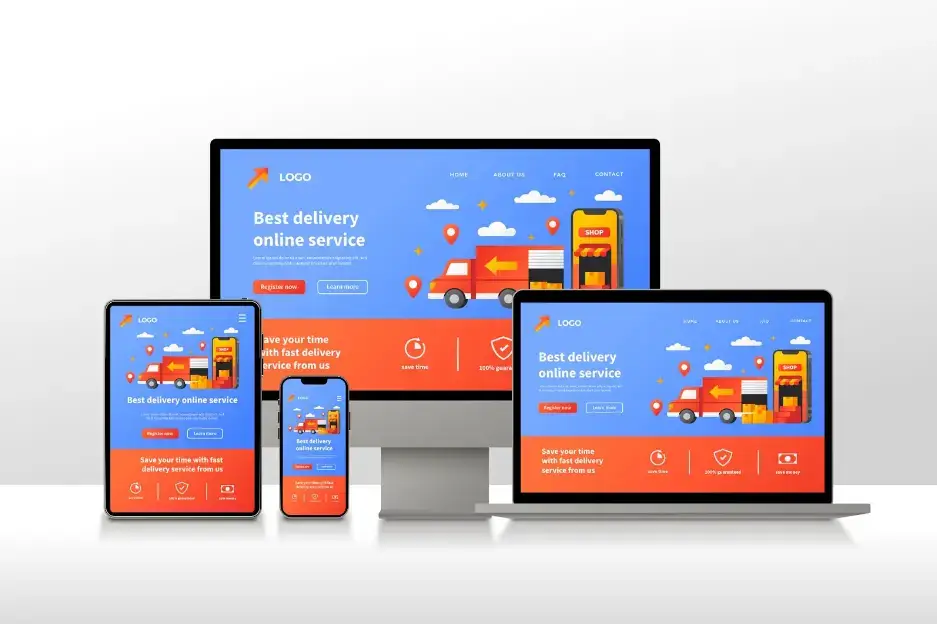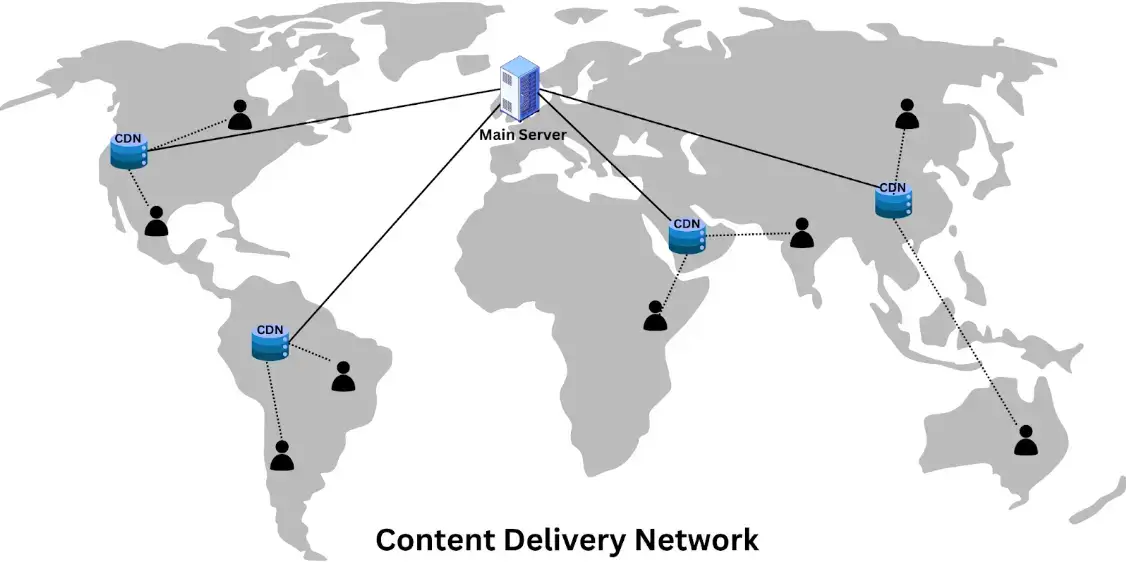Websites have become an integral part of every business. Whether it's a small business or a large enterprise, every organization has a business website to promote their products or services. But more than having a business website with great visuals and relevant content is required.
With increasing competition, potential customers are likely to stay on your site for just a few seconds. After that, they will end up landing on the competitor's site.
That's why your website must have great speed and performance to keep the visitors engaged and convert them into customers. This article will uncover what website speed and performance are and effective ways to improve them.
What is Website Speed and Performance?
Generally, both website speed and performance are associated with the user experience and sound similar. But there is a slight difference between both of them.
Website speed is how fast the content on your website loads and is accessible to the user. It is a crucial element that significantly affects the reputation of your online business.
On the other hand, website performance is a broad term related to the overall functionality of a website that can convert a visitor into a potential lead or a customer. It consists of factors like overall speed, responsiveness, content, design, etc.
For example, when a visitor lands on your website, its performance depends on how fast it loads, responds to the user queries, and how smoothly it allows them to take the required action (filling out a form, purchasing, or subscribing).
10 Effective Ways to Enhance Website Speed & Performance
- Check and Optimize Page Speed
- Minify HTML, CSS, & JavaScript Files
- Compress The Size of Visual Contents
- Make Navigation Easy
- Delete Unwanted Plugins
- Use Website Caching
- Optimize The Content
- Focus on Mobile Devices
- Consider Using CDN
- Use A Better Hosting
These are some of the effective ways to enhance the speed and performance of your website. Let's have a look at them in detail.
1. Check and Optimize Page Speed
The very first step is analyzing the speed of different web pages on your website. You can use free tools like Google’s Page Speed Insights or Pingdom to test the page speed. These tools help you test the overall performance of your website based on different core web vitals.

Here is an example of the page speed insights tool. It audits the page speed and performance based on different metrics. Moreover, it also provides you with a list of website optimization suggestions to improve the speed and performance of your site. You can consider implementing them.
2. Minify HTML, CSS, & JavaScript Files
You can improve the page speed by eliminating unwanted elements of HTML, CSS, & Javascript files for your website. Remove the unnecessary spaces, comments, breaks, and extra characters. Also, consider minifying the unused functions and variables that do not affect the functionality of your website.

Page speed insights tool helps you identify potential elements that you can reduce. By reducing HTML, CSS, and JS files, you can reduce HTTP requests and improve the speed of your website.
3. Compress The Size of Visual Contents
Using visual content like images, videos, infographics, and charts is a great way to enhance your website conversion rate. But visual content also increases the page size and makes your site slow.
The good part is you can use these visuals without affecting the speed and performance.
Make sure to compress the images before uploading them. You can use tools like TinyPNG, Kraken.io, and ImageOptim to reduce the image size without affecting its quality.
If you want to use a video for the background, compress it and try to keep the size as low as possible.
In case of feature videos, first, upload them to third-party apps like YouTube and then embed them on your site. By doing this, you can leverage videos without affecting the website's speed.
4. Make Navigation Easy
Website navigation is a design feature that allows users to find and access what they want from the website. It can be different pages, links, buttons, etc.
Navigation does not directly affect the website speed, but it can lead to additional page loading and poor customer experience.
Read more about enhancing website performance with lazy loading.
You can improve the website navigation by organizing the web pages. Also, keep all the Call To Action (CTA) buttons, menu, and other helpful links clear and accessible to the users.
Apart from that, smooth navigation also helps in Search Engine Optimization by making it easy for search engines to crawl and index the pages more effectively, which helps in enhancing the website's performance.
5. Delete Unwanted Plugins
Websites hosted on content management systems like WordPress often use different plugins to add features and functionality to their websites. But along with the features, they also bring additional page weight making your website slow.
The requirements of plugins vary from business to business. But you can check for unwanted plugins and delete them from your website.
Consider an email newsletter plugin, for instance. If you don’t send newsletters regularly, you can consider removing them from your website.
6. Use Website Caching
The cache is the subset of data of your website stored in the user's device. This data is pre-loaded and delivered to the user while the remaining content loads.

Caching does not affect the speed directly, but it helps reduce First Contentful Paint (FCP) by lowering the load on the server. It helps reduce the bounce rate for your website.
You can enable caching through the settings of your CMS and hosting provider. It stores the latest static version of your site and loads it when the user visits the website.
7. Optimize The Content
Content is the most crucial element of your website, as it helps keep your visitors connected. But it also contributes to the performance of your website.
By optimizing the content of your site, be it a SaaS blog or a Magento store, you can enhance the website speed and conversions, especially when supported by a reliable Magento hosting provider, creating a seamless user experience.
Firstly, make sure the content on your website is clear and precise. Hire content writers to guarantee the excellence of your content. Unwanted content might not affect the page speed but can lower your conversion rate. Use simple language and formatting.
Moreover, avoid using multiple fonts. They not only increase the loading time but also affect the user experience. Use minimum fonts that are optimized for page speed.
8. Focus on Mobile Devices
With the majority of the searches being made from mobile devices, focus on mobile responsiveness is a must. You must optimize your website for mobile devices to make sure it provides a smooth user experience for most of your users.
Firstly, website themes count for the majority of the total website size. So if you are about to build a new site or trying to redesign the old one, consider using a light and mobile-friendly theme.

However, choosing a simple theme doesn't mean sacrificing the appearance of your website. With the right themes, you can create sites with better looks and performance.
You have to pay more attention to the content placement and layout of your mobile site. During the content development process, make sure that all the elements are clearly visible to the user. And lastly, keep an eye on the speed and performance of your site. Try to optimize it whenever required.
9. Consider Using CDN
If you have a high-traffic website with visitors from different locations, a CDN (Content Delivery Network) can help you. A CDN is a network of servers that stores the cached version of your website.

These CDNs are located across the globe. So when visitors land on a website, they get a response from the nearest CDN instead of the main server. This process significantly reduces the load time and enhances website speed.
10. Use A Better Hosting
Your hosting provider plays a crucial role in the speed of your website. The better the hosting, the faster your website will work. Hosting with high-speed servers can boost the performance of your website.
Generally, most businesses opt for hosting with shared servers because of their lower pricing. This type of hosting can be helpful for small websites with limited pages. However, it will take a long time to load and access the content if used for large sites.
Hosting providers with Virtual Private Servers can be a better WordPress hosting option. It is similar to shared hosting, but each website has dedicated resources.
Dedicated servers can be an option if you have an enterprise-level site and want it to load and work fast. As its name suggests, your website gets a dedicated server, which helps improve the speed and performance.
Read more about web hosting.
Summing Up
The bottom line is website speed and performance are critical factors that can make or break your business online.
With several helpful changes mentioned in this article, and enlisting help from companies like Website Design Company - Digital Nomads HQ, you can amplify your site's speed and performance.
Apart from that, you can invest in better hosting solutions or a CDN if you have large sites.
However, while improving the speed and performance of your website, make sure the user experience remains smooth throughout the process. Because a fast site with poor experience will cost you more.
Author Bio
Krishna Yadav is known for his two startups Infibusiness Solution and Branding Marketing Agency ( BMA ). He is an entrepreneur & has expertise in organic SEO, Branding, Content Marketing, and PPC. His clients operate in industries ranging from home services, IT services, Saas, marketing, and advertising.


